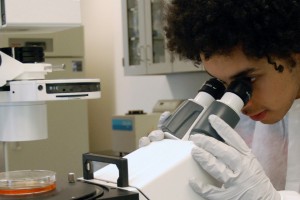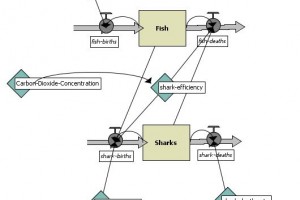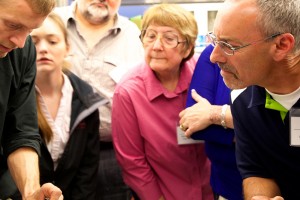Typically, Cytoscape is used to visualize and integrate molecular interaction networks with various data, such as gene expression profiles.
Video project for the Institute for Systems Biology Baliga Lab interns. Learn how to use hemocytometer.
Please join us as at NSTA in Chicago on March 13th, 2015! Two of our team members will be presenting a draft version of our latest modeling curriculum. We will walk teachers through this cross-disciplinary curriculum that teaches students how dynamic systems models are developed, evaluated, and applied to understand complex scientific issues such as cancer […]
Back by Popular Demand – A full 5 day workshop to learn about implementing systems science in your classroom! Teacher Testimonial about the 2013 Workshop: “…the best teacher workshop I have ever been to, and I’m generally very critical of these things. The summer workshop was such an eye opener and the students have been […]
Posted: March 14, 2014 The Baliga Lab at the Institute for Systems Biology (ISB) is currently hiring two high school teachers to work full time for approximately 8 weeks during the summer of 2014. Since 2004, the Baliga Lab has joined teachers with researchers, engineers, programmers, and student interns to develop standards-, research- and inquiry-based […]
Have you ever wondered… …what’s happening in current research labs? …what systems biology really is? …what STEM professionals do? …how people become STEM professionals? Have you ever wondered how you can EASILY incorporate… …interdisciplinary, hands-on science in your high school classroom? …systems science AND systems thinking into your high school curriculum? Then this workshop is […]
The Baliga Lab at the Institute for Systems Biology (ISB) is the winner of two grants in the amounts of $15,000 each from the MJ Murdock Charitable Trust for its 2013 Partners In Science Program. Each of these two year grants will enable two high school teachers to collaborate with scientists in conducting research projects […]
These modules are created based on National and WA State Standards.
For more information on which standards are addressed please see the appropriate link AND please also see the sections on “What Students Learn” and “What Students Do” within each module page.
The Great Salt Lake is an interesting ecosystem to study due to the organisms that inhabit this saline environment and due to the impact humans have had on this ecosystem. In 1952, a causeway was built to replace an existing railroad trestle. Unlike, the previous trestle, the new causeway does not allow circulation of water between the two sides of the Great Salt Lake.
Below is a compilation of general resources on ocean acidification and systems level studies. Some of these resources are directly used in this curriculum module, but most are for your reference. While we do not endorse all items listed below, they have been referred to us by educators.







